Nuclear accidents are a lot more common than you might think they are. Before this article was written, we didn’t even realize just how many had happened in this generation.
[CustomTables]
So, what defines a nuclear accident, exactly? According to the International Atomic Energy Agency (often shortened to IAEA), describes a nuclear and radiation accident or incident as an event that has resulted in major consequences to citizens, the environment, and facilities.
These consequences include the deaths of citizens, a significantly large amount of radioactive activity or release in the environment, and/or a nuclear meltdown.
According to records, a total of ninety nine nuclear incidents have occurred in nuclear power plants worldwide.
Since the Chernobyl disaster on April 26, 1986 in the Ukraine, fifty-seven accidents have happened. 57%, or 56 out of 99, of nuclear incidents have happened in the United States.
In this article, we’ll be talking about thirteen of the worst nuclear accidents to happen in history in chronological order.
13. Chernobyl Disaster, Ukrainian SSR
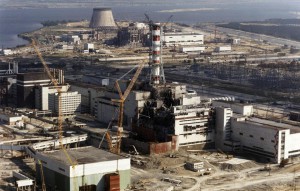
On April 26, 1986, the Chernobyl disaster, also known as simply Chernobyl or the Chernobyl accident, had taken place. This tragedy was the worst nuclear disaster to happen in terms of cost of damages and fatalities. It was recorded as a Level 7, the highest number, on the disaster scale. Only one other disaster had been that high on the scale.
Around 300,000 citizens were forced to evacuate after all the fires, explosions, and more that had happened during the event. Radioactive material had also made its way throughout the European continent. Radiation levels were so bad that people had actually suggested that women who were pregnant receive abortions, fearing that their child would be or had already been exposed to radiation while in the womb.
During the accident itself, fifty six people were killed. Afterwards, people were dying off from long term effects. 4,000 to 985,000 citizens alone died from cancer.
12. Plymouth, Massachusetts, United States
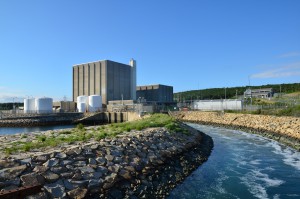
On April 11, 1986, Boston Edison’s Pilgrim nuclear power plant, also known as the Pilgrim nuclear power station or generation station, was forced to have an emergency shutdown due to constant problems with their equipment.
Zero fatalities had occurred. The owners of the plant announced on October 13 of 2015 that the plant would close by June of 2019 because of the conditions of the market and costs increasing. The costs included the upgrades that were necessary for proper safety.
11. Athens, Alabama, United States

On September 15, 1984, the Browns Ferry Unit 2 was forced to have an outage for six years because of issues with designing, operating errors, and safety violations.
A couple of months later on March 9, 1985, operations on all of the Browns Ferry units were suspended due to instrument malfunctions in the control systems.
Nobody was killed during either of these events.
10. Three Mile Island, Pennsylvania, United States
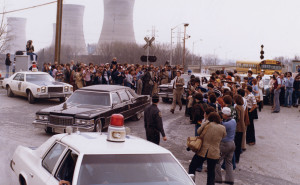
On March 28, 1979, what was named to be the worst nuclear accident in the United States happened. It has been otherwise known as the Three Mile Island accident. It occurred in Dauphin County, Pennsylvania and was Level 5 on the disaster scale.
What had happened in this accident was coolant loss and a partial core meltdown because of operating errors and radioactive gases were released. Nobody seems to be one hundred percent positive on how much radioactive gas was actually released.
“ Radioactive gases were released ”
All of the schools in the area closed down and the citizens were told to stay indoors at all times. Twenty-eight hours after the accident had happened, voluntary evacuation became an option.
Women who were pregnant and young children were advised to evacuate the premises. An estimate of 140,000 people had left their homes until everything was under control again. 98% of these people returned to their homes no longer than three weeks after leaving. This incident thankfully left zero fatalities.
https://www.youtube.com/watch?v=4Qwg4oERhvw
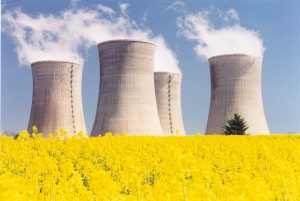 9. Jaslovské Bohunice, Czechoslovakia
9. Jaslovské Bohunice, Czechoslovakia
On January 5, 1976, a malfunction happened while fuel was being replaced at the Bohunice nuclear power plant that left two people killed.
On February 22, 1977, the A1 reactor went through a significant accident during fueling and it resulted in a Level 4 disaster. Fortunately, this incident happened with zero fatalities.
8. Greifswald, East Germany

On December 7, 1975 in Greifswald, East Germany, the biggest nuclear power station known as the Greifswald nuclear power station had an electrical incident.
An apprentice was being shown by an electrician how to bridge electrical circuits. After making a decision that turned out to be the wrong one, a fire broke out in the main trough, destroying the control lines five of the six main coolant pumps in the unit.
Shortly after the fire broke out, the fire-brigade extinguished the fire and the pumps had been repaired temporarily. The incident had not been brought up to the public until thirteen years later in 1989.
What was once a Level 4 disaster was later revised to Level 3 and caused $443 million in damages. Fortunately, no people were reported dead in this accident.
7. Sosnovyi Bor, Leningrad Oblast, Russia
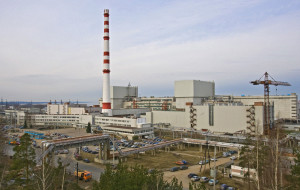
On January 7, 1975, radioactive gases residing in a concrete tank from Unit 1 in the Leningrad Nuclear Power Plant in Sosnovyi Bor, Russia exploded. There were zero reports saying that any radiation was released or that anyone was killed from the accident.
Just under a month later on February 6, the secondary cooling circuit of that same unit broke which caused contaminated water to be released into the environment and killed three people. There was absolutely no media coverage on the accident.
Nine months later on November 28, one of the fuel channels in the same unit lost a significant amount of coolant that eventually once again resulted in radiation being released for an entire month. Just like the last incident, there was zero media coverage.
Number of deaths from these particular accidents is unknown. Unfortunately, many more nuclear accidents have occurred since the incidents of 1975.
6. Lucens reactor, Vaud, Switzerland
On January 21, 1969, a Level 4 loss-of-coolant accident was endured at the Lucens reactor in Lucens, Vaud, Switzerland. The Lucens reactor was a small nuclear reactor that was destroyed in the accident.
In 1962, it was created in an cavern underground and was moderated by heavy water, cooled by carbon dioxide. It was meant to run until the end of 1969.
Unfortunately, the plan ended sooner than they wanted it to when the accident occurred during the startup on January 21.
Failure to get things to cool down caused the fuel to become hot enough to melt and the cavern was contaminated by radioactivity. Fortunately, they were able to seal the underground cavern and no fatalities were recorded.
5. Frenchtown Charter Township, Michigan, United States

On October 5, 1996, Fermi 1, established in 1963 and located south of Detroit, Michigan, lost a lot of coolant and had a partial core meltdown.
A piece of zirconium cladding had become loose inside of the reactor chamber which caused the metal to block the liquid sodium coolant from being able to reach the two subassemblies that held multiple fuel rods. This caused the fuel to overheat tremendously and melt.
Thankfully, no radiation had been leaked into the environment and nobody was killed, however, the incident still ended up costing $132 million in damages.
Workers were able to keep everything contained and were able to shut down the facilities as quickly and professionally as possible. Once everything had settled down, the plant learned that only 1% of the fuel had been damaged. Zero fatalities were reported.
4. Idaho Falls, Idaho, United States
On January 3, 1961, a nuclear reactor incident that had occurred Idaho Falls, Idaho, became the first fatal accident in the United States.
“ The first fatal accident in the U.S ”
The SL-1 (or Stationary Low-Power Reactor Number One) ended up being destroyed as the result of a control rod was pulled out of the reactor too far and a core meltdown and steam explosion had developed. The incident resulted in the deaths of three military enlisted personnel that had been trying to work on the problem at hand.
The three had been killed from physical trauma and it had been said that even if they weren’t killed from the explosion, there was absolutely no chance of survival due to the extremely high amount of radiation that had been released.
https://www.youtube.com/watch?v=FAKcWM-yBkI
3. Sellafield, Cumberland,United Kingdom
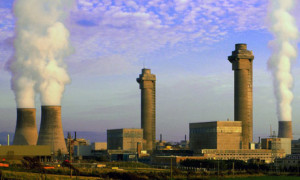
After World War II had ended, the British government wanted to build nuclear weapons so they could continue to be seen as a world power.
The project became the Windscale Nuclear Plant. On October 10, 1957, a Level 5 nuclear accident known as the Windscale fire and the United Kingdom’s worst nuclear accident, had happened. Everyone involved in the accident made it out alive.
While doing typical maintenance at work, workers noticed how the temperature was rising when, in fact, it should have been falling. This caused them to inspect things more closely and once they had arrived to the scene of investigation, it was on fire.
“ U.K’s worst nuclear accident ”
The fire had gone on for three days and during that time, lots of radioactive contamination was spread throughout the United Kingdom and Europe. Iodine-131, which has been thought to cause thyroid cancer, had been released and reports estimated 240 cases of cancer since the fire had started.
Nobody had been forced to evacuate the surrounding premises, but the drinking milk around had been destroyed after citizens were worried that the radiation contaminated it.
2. Simi Valley, California, United States

On July 12, 1957, the Sodium Reactor Experiment was built by Santa Susana Field Laboratory in California. In July 1959, the plant experienced a partial core meltdown.
A portion of thirteen out of the forty-three fuel elements there melted and radioactive gas had been released into the atmosphere. The amount that was released is unknown, but it is said it was more than what was released in the 1979 Three Mile Island disaster in Pennsylvania.
The Simi Valley tragedy was named to be one of the worst tragedies in United States history. Fortunately, nobody had died from the incident. This accident had cost $32 million in damages.
1. Mayak, Kyshtym, Russia

On September 29, 1957, a Level 6 disaster occurred at the Mayak Production Association, which is one of the largest nuclear facilities located in Kyshtym, Russia. This incident turned out to be one of the worst nuclear tragedies in history.
Mayak was created in 1946 and in 1949, its first nuclear bomb was made. It had a lot of success which caused Moscow to demand more bombs to be made, but with less time to make them. That demand caused manufacturers to not be able to pay close attention while building them, thus just over seventeen thousand workers were exposed to a radiation overdose.
On the day the tragedy occurred, about seventy to eighty tons of radioactive waste sat in a tank that had a cooling system failure and was never repaired. The cooling system featured caused the temperature to grow higher which caused evaporation and a chemical explosion. Everything exploded at a temperature of 350 degrees Celsius (around 662 degrees Fahrenheit).
It was so strong that it blew off a 160 ton lid made entirely out of concrete and blew twenty million curies of radioactive material high in the sky. Ten to eleven hours later, the waste covered around twenty thousand square kilometers where 270,000 Russian citizens resided.
Although people tried to keep what happened under closed doors, it was very difficult, almost impossible, to keep information about the disaster from leaking out. However, the western side of the world did not hear about what happened until around thirty years late in 1976 when Zhores Medvedev, a Soviet emigrant, started giving out details.
The CIA had already known about it by 1960, but decided to keep the information away from the public even after documents had been published to avoid any widespread panic.
An estimate of twenty-two villages in the area had been exposed to the radiation and around ten thousand citizens were evacuated from their homes. It took only a week for some evacuations to occur and up to two years for others.
